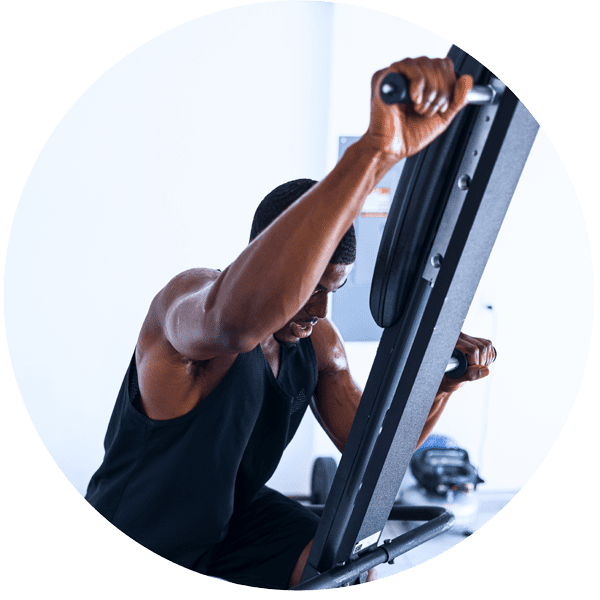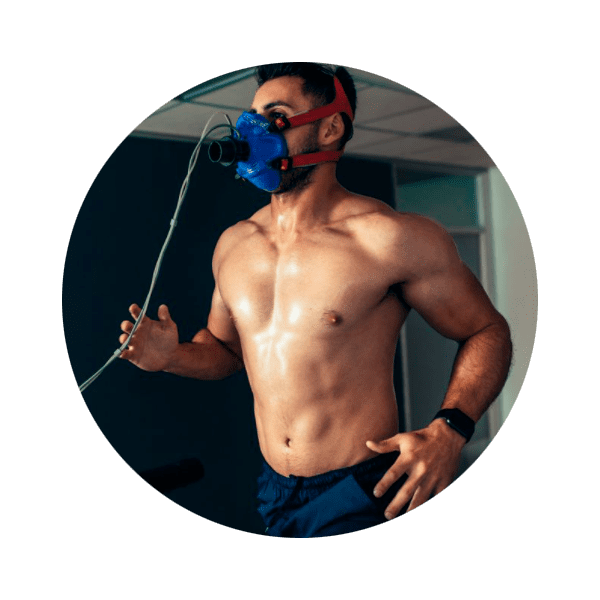Research Shows VersaClimber Beats Treadmill Running and Rowing

Measuring maximum oxygen consumption during exercise is considered the gold standard indicator of cardiovascular fitness level. The greater the volume of oxygen (VO2) used, the stronger the cardiorespiratory system.
VO2 max (for maximum) is the amount of oxygen you breathe in while exercising as strenuously as you can. When you are working at a very high intensity, you breathe faster and more deeply because your body needs more energy. The more oxygen you inhale, the more that the body can send to the heart and muscles to be used for energy.
Known as oxygen uptake, VO2 max is usually measured in a lab in milliliters per kilogram of body weight per minute, but some fitness trackers and smart watches now provide estimates as well. A higher VO2 max typically means better physical fitness and heart health.
Average VO2 Max Measurements

VO2 max depends on your fitness level, gender, age and location (such as sea level or higher elevation). For individuals between ages 18-45, average ranges are:
Sedentary men 35-40 mL/kg/min
Sedentary women 27-30 mL/kg/min
Active men 42.5-46.4 mL/kg/min
Active women 33.0-36.9 mL/kg/min
Highly active men ≤ 85 mL/kg/min
Highly active women ≤77 mL/kg/min
Boosting Your VO2 Max
Improving your VO2 max not only boosts your fitness level, but offers additional benefits, including:
- Greater endurance
- Faster speed
- More energy
- Better athletic performance
- Improved stress tolerance
- Enhanced immunity
- Easier performance of activities of daily living, like climbing stairs
Training to increase your VO2 max requires increasing intensity in cardiovascular and anaerobic exercise, such as high-intensity interval training. According to one scientific study, vertical climbing is one of the best ways to elevate your maximal oxygen update – even better than treadmill running or rowing.
VO2 Max: VersaClimber vs. Treadmill and Rowing Ergometer
Researchers at Washington State University conducted maximal exercise testing on female collegiate athletes to compare results when using the VersaClimber, running on a treadmill and rowing for approximately 12 minutes at progressively higher intensity. The study found that VO2 max values were significantly greater during VersaClimber exercise than treadmill running and rowing ergometry.
The study measured climbing speed in vertical meters per minute, total accumulated feet climbed, step height and total accumulated exercise time. On the VersaClimber, individuals were instructed to use proper form by maintaining a loose grip, allowing the arms to relax at the lower phase of each stroke, avoiding a static squatting position and completing full range-of-motion strokes. Heart rates were also monitored in beats per minute (bpm) during exercise.
The VersaClimber elicited significantly greater VO2 max (approximately 54 mL/kg/min) and heart rate (196 bpm) than the treadmill (approximately 52 mL/kg/min and 195 bpm) and the rowing ergometer (approximately 51 mL/kg/min and 193 bpm).
The Bottom Line
What does this mean for you? It indicates that performing total-body vertical climbing on the VersaClimber is an excellent method of cardiovascular conditioning to improve stamina. The VersaClimber stimulated a higher physiological challenge than treadmill running – perhaps due to its total-body motion – and the rowing ergometer – likely due to its weight-bearing, vertical body position.
So, whether you’re a beginner trying to enhance your fitness level, or a competitive athlete seeking an edge, training with the VersaClimber can potentially deliver better results.
Brahler, CJ & Blank, SE. VersaClimbing elicits higher VO2max than does treadmill running or rowing ergometry. Med Sci Sports Exerc. 1995 Feb; 27(2):249-54. PMID: 7723649.
